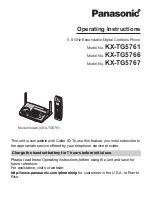
B
GENERAL INFORMATION AND ROUTINE MAINTENANCE
Read all of SAFETY and this section before attempting any procedure. Pay particular attention to Notices, Cautions, Warnings and Dangers.
5
Repair and Service Manual
653045
Always wear safety glasses while refueling to
decrease the risk of possible eye injury from gaso-
line or gasoline vapor.
Keep hands, clothing and jewelry away from moving
parts.
Use care not to contact hot objects.
Raise the rear of the vehicle and support on jack
stands before attempting to run the engine.
Preparing the engine for a prolonged storage period (30
days or more) calls for a few simple steps to decrease the
risk of a build up of varnish and gum in the carburetor and
corrosion in the engine.
•
Turn the key switch to the OFF position, and leave
the Forward/Reverse switch in the NEUTRAL posi-
tion during storage.
•
Perform all required routine maintenance. See
SCHEDULED MAINTENANCE section.
•
Properly inflate the tires to recommended pressure
(psi) stated on the sidewall of tires.
•
Place the Forward/Reverse handle in the NEUTRAL
position and engage the neutral lock.
•
Turn the fuel shut-off valve to the closed (OFF) posi-
tion
Fig. 5 Fuel Shut Off Valve
•
With proper ventilation, run the engine until the
remaining fuel in the carburetor and fuel lines is
depleted and the engine stalls.
•
Return the neutral lock to the OPERATE position.
•
Loosen, the carburetor drain screw. Drain any fuel
remaining in the bowl into an approved container,
Pour the collected fuel into the vehicle fuel tank. Add
fuel stabilizer to the fuel (follow manufacturing
instruction) to stabilize fuel and install the tank cap
securely.
•
Replace the carburetor drain screw.
•
Remove spark plug and Pour 1/2 oz. (15 ml) of SAE
10 - 30 weight oil or fogging oil into the cylinder.
Rotate the crankshaft by hand several times, Install
the spark plug.
•
Do not engage the park brake, but secure the car
from rolling.
•
Change the oil while the engine is warm.
•
Clean the body, chassis and engine of debris, mud,
chaff or grass
VEHICLE CLEANING AND CARE
Read and understand all instructions
supplied by the manufacturer of the
pressure washer before use.
NOTICE: When you clean the outside of the vehicle
with a pressure washer, do not use more than 700
psi pressure. Keep a minimum distance of 12 inches
from the spray nozzle to the painted surface. Do not
clean the plastic parts with abrasive solvents.
Make sure you use correct methods and cleaning materi-
als to decrease the risk of damage to the outside of the
vehicle. The use of more than 700 psi water pressure can
cause injury to anyone in the area or damage to vehicle.
Clean the windshield with water and a clean cloth.
Remove small scratches with a plastic polish or Plexus®
plastic cleaner, available from the service parts depart-
ment.
Apply a soap and water solution with a sponge or soft
brush to clean the vinyl seats and plastic or rubber trim.
Dry with a cloth.
Use a commercially available vinyl and rubber cleaner to
remove oil, tar, asphalt, shoe polish, etc.
Wash the vehicle frequently with cool water and mild
detergent to protect the painted surfaces.
Apply wax that is for clear coat automotive finishes to
improve the appearance and protection of the painted
surfaces. Do not apply wax to matte finish surfaces.
Materials used as fertilizers or for dust control can collect
on the bottom of the vehicle. These materials will cause
corrosion of components, unless cleaned with water.
Clean areas where mud or dirt can collect. Loosen the
sediment that is packed in closed areas to help with
removal. Be careful not to damage the paint.
Turn to OFF
Position
Fuel Shut-off
Valve
Property of American Airlines
















































